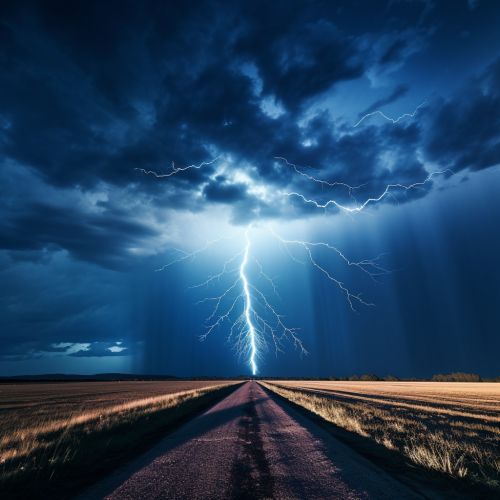The Science of Atmospheric Electricity and Lightning
Introduction
Atmospheric electricity is the study of electrical charges in the Earth's atmosphere. The movement of these charges generates electric currents, which result in phenomena such as lightning, Saint Elmo's Fire, and auroras. The science of atmospheric electricity is a branch of electromagnetism, and it is closely related to meteorology due to the role of atmospheric conditions in electrical phenomena.


History of Atmospheric Electricity
The study of atmospheric electricity dates back to ancient times, with early civilizations observing and documenting electrical phenomena such as lightning and auroras. However, it wasn't until the 18th century that scientists began to understand the nature of electricity and its relationship with the atmosphere.
Principles of Atmospheric Electricity
Atmospheric electricity is primarily generated by the ionization of air molecules. Ionization occurs when a molecule gains or loses an electron, resulting in a charged particle, or ion. In the atmosphere, ionization can be caused by several factors, including solar radiation, cosmic rays, and radioactive decay.
Lightning
Lightning is one of the most dramatic and well-known manifestations of atmospheric electricity. It is a massive electrostatic discharge caused by the imbalance of electrical charges within a cloud, or between a cloud and the ground.
Categories of Lightning
There are several categories of lightning, including intra-cloud lightning, cloud-to-ground lightning, and cloud-to-cloud lightning. Each category is characterized by the location of the electrical discharge.
Formation of Lightning
The formation of lightning involves a complex process of charge separation and accumulation. This process is driven by the movement of air within a thunderstorm, which causes particles within the cloud to collide and transfer charges.
Lightning Discharge
A lightning discharge occurs when the electric field strength exceeds the dielectric strength of the surrounding air. This causes a rapid discharge of electricity, which we see as a lightning bolt.
Effects of Lightning
Lightning can have a variety of effects, both physical and chemical. Physically, it can cause damage to structures and start fires. Chemically, it can alter the composition of the atmosphere by producing ozone and other reactive species.
Safety and Lightning
Due to the destructive power of lightning, safety measures are crucial. These include lightning rods and other forms of lightning protection, as well as safety guidelines for individuals during thunderstorms.
